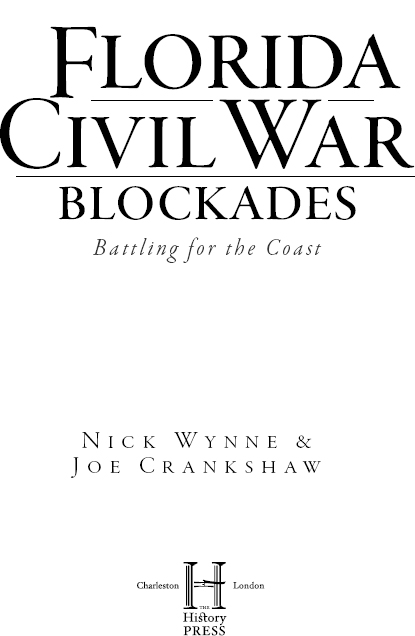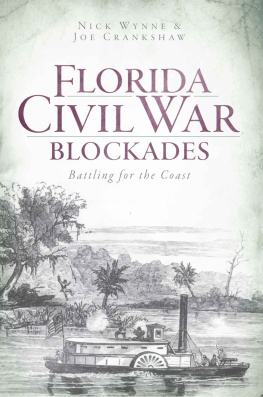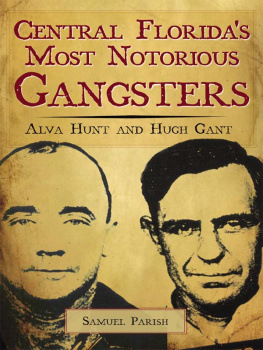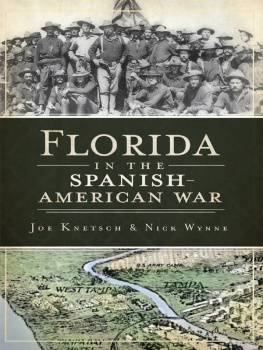
Published by The History Press
Charleston, SC 29403
www.historypress.net
Copyright 2011 by Nick Wynne and Joe Crankshaw
All rights reserved
First published 2011
e-book edition 2012
ISBN 978.1.61423.391.6
Library of Congress Cataloging-in-Publication Data
Wynne, Nick.
Florida Civil War blockades : battling for the coast / Nick Wynne and Joe Crankshaw.
p. cm.
print edition ISBN 978-1-60949-340-0
1. Florida--History--Civil War, 1861-1865--Blockades. 2. United States--History--Civil War, 1861-1865--Blockades. 3. Florida--History--Civil War, 1861-1865--Naval operations. 4. United States--History--Civil War, 1861-1865--Naval operations. I. Crankshaw, Joe. II. Title.
E600.W96 2011
973.7459--dc23
2011025153
Notice: The information in this book is true and complete to the best of our knowledge. It is offered without guarantee on the part of the author or The History Press. The author and The History Press disclaim all liability in connection with the use of this book.
All rights reserved. No part of this book may be reproduced or transmitted in any form whatsoever without prior written permission from the publisher except in the case of brief quotations embodied in critical articles and reviews.
For Debra T. Wynne and Cynthia Putnam Crankshaw
Contents
Introduction
Every kingdom divided against itself is brought to desolation; and every city or house divided against itself shall not stand.
Matthew 12:25
The great conflict that ravaged the United States during the first five years of the 1860s was the product of years of political, economic and moral wrangling between citizens of the Southern states and their brethren in the Northern ones. In 1832, the Nullification Crisis, which saw South Carolinians seek to declare a protective tariff null and void within the boundaries of their state, raised the specter of secession and of state rights taking precedence over federal laws. President Andrew Jackson made preparations to invade South Carolina, and citizens of that state began their own preparations to defend South Carolina. Only the passage of a compromise tariff defused the situation. In 1850, the question of secession was raised again when Congress attempted to limit the expansion of slavery into new territories acquired by the United States. Once again, radical politicians in South Carolina called for the breakup of the Union and the creation of a separate Southern nation that would protect slavery and preserve the agrarian values that had dominated the early federal government and American society. The secession of the Southern states was avoided when moderate and conservative leaders persuaded radicals that compromise was possible, particularly since Southerners controlled most of the important committees of Congress. The Compromise of 1850, among other things, protected the institution of slavery in new territories below 36 30 and outlawed the slave trade in the District of Columbia, but the compromise merely delayed future conflicts because it did not address the fundamental issues of state secession and the institution of slavery.
During the decade of the 1850s, the rise of the abolitionist movement and the Republican Party exacerbated sectional differences. As the voices on both sides of the slavery debate became more strident and political leaders more radicalized, the chances for a lasting compromise grew smaller and smaller. The growing industrialization of Northern states, fueled by growing hordes of European immigrants, saw the South losing its economic importance and its influence in the political life of the nation.
Men like Robert Toombs, Alexander Stephens and Howell Cobb of Georgia, who had led the moderates in Nashville in 1850, slowly moved to more radical positions, frustrated by the election of ideologues to public office in Northern states, Southern states and Congress. Sadly, they concluded that the Union, which had seen so many Southerners as leading lights, was in its death throes. The election of Abraham Lincoln, a moderate abolitionist, in 1860 was the final straw, and these moderates, and others like them throughout the South, became reluctant secessionists. Only an independent Southern nation, in their opinion, could preserve Southern institutions like slavery and state rights. If the Southern states remained in the Union, they would be reduced to a secondary role, subject to the will of the more populous Northern states. It was better, they reasoned, to disband the Union and create a smaller, heterogeneous nation of slave owners and small farmers bound together by an agrarian economy.
With Lincolns election, Southern radicals gained the upper hand, and on December 20, 1861, South Carolina left the Union. South Carolinas action was quickly duplicated by six additional slave statesAlabama, Florida, Georgia, Louisiana, Mississippi and Texasand on February 8, 1861, the establishment of the Confederate States of America was announced at a convention of delegates from these now independent nations in Montgomery, Alabama. Governors of the various Confederate states hurriedly sent state militia troops to occupy Federal property and military establishments within their state borders. Two major installationsFort Pickens in Pensacola and Fort Sumter in Charleston Harborremained in Federal hands when the commanders of these forts refused to surrender them to state troops. Federal control of Fort Taylor in Key West was not challenged, since it was so far from other occupied parts of Florida that it could not be taken. Key West would play a major role in the Unions later war plans.
With Lincolns inauguration in March 1861, AmericansNorth and Southwondered what his stance would be toward the Confederacy and the takeover of Federal property. In April, he made the decision to resupply Fort Sumter. This event triggered a Confederate bombardment of Sumter on April 12, which forced the fort to surrender. The war that both sides did not wish was now a reality.
As a result of the outbreak of violence at Fort Sumter, four additional Southern statesVirginia, North Carolina, Tennessee and Arkansascast their lot with the Confederacy, and each side prepared for war. Union and Confederate leaders were sure that any war would be one of a short duration, and each side felt that it had advantages to ensure a win. Southern leaders pointed to the fact that their military heritage (many of the high-ranking prewar officers in the United States Army were Southerners) and the martial traditions of Southern state militias would give it an advantage, while Union leaders felt that they possessed a winning hand because the Union retained control of the navy and the major stores of military equipment. Abraham Lincoln was so certain that the war would be concluded in a matter of weeks or months that his initial call for volunteers asked for only 75,000 men to suppress the rebellion. The Provisional Confederate Congress, meeting in Montgomery, authorized newly elected Confederate president Jefferson Davis to call for 100,000 volunteers. Both sides miscalculated, and the war went on for four long years.
The Confederate government was pledged to the defense of the new Southern nation, and the notion of defense dominated its strategy for war. Given the limited military resources of the different Confederate states and the central government, a defensive strategy made sense. The major consideration for Confederate leaders was simply to hold the territory they had, not to expand or to add new territory. Only when the opportunity to deal a devastating blow to Union armies arose would the Confederate forces abandon the defense and move to the offense. Tragically for Confederate military fortunes, Robert E. Lee took the Army of Northern Virginia into Union territory twice, and both invasions ended miserably for the Confederacy.
Next page







